Five years later, he's an iconic image--a smiling man in a Cal ball cap. And everyone knows his story.
Early on September 11, 2001, passengers aboard a Boeing 757 from Newark began getting frantic cell phone calls from loved ones about planes that just had been hijacked and smashed into the World Trade Center and Pentagon. When hijackers emerged in their midst, the passengers realized that their plane too was to be used as a weapon and rose up to wrest United Airlines Flight 93 from the terrorists' presumptive Washington, D.C., target.
Powering the charge was 31-year-old Mark Bingham: rugby champion; PR firm owner; friend to hundreds; fervent University of California, Berkeley, booster; and gay man. His death--and, when his story hit the wires, his life--gave America an authentic gay hero.
I attended Bingham's memorial service--held, fittingly, on the Cal campus. More than 500 people packed Wheeler Hall to hear Sen. John McCain eulogize the man he said saved his life by diverting Flight 93 from the Capitol. Onstage with the Republican senator was Bingham's former partner, Paul Holm. This felt earthshaking: Only a few years earlier, Robert Dole had returned a campaign donation from the Log Cabin Republicans rather than be tainted by gays. The memorial held out hope of unity that Holm says Bingham, who moved effortlessly among many circles, would have appreciated.
Mark Bingham with his mother, Alice Hoglan
"Everyone should be proud of him--black, white, gay, straight, Bay Area, New Yorkers--because of his actions that day," says Holm, who was with him nearly five years. "We in the gay community should be particularly proud because his actions broke a lot of stereotypes."
Five years on, many would say the world has not lived up to the promise held out that day--not for homeland security, not for gays, not for religious tolerance, not for anybody. But the nature of heroes is that they impel us to seek the best.
So it's a good time to think again about Mark Bingham. The amazing movie United 93 is out on DVD. We list some of the many tributes made to him. And we visit some of his favorite places, as related by his friends, to get a sense of who he was and to feel close to a gay man who made a difference.
California Memorial Stadium, Berkeley, Calif.Getty images
Here's where our hero, class of '93, famously tackled the Wisconsin badger mascot at a football game, then later performed the same maneuver on archrival Stanford's Tree.
Bingham, three sheets to the wind during the 1992 Big Game, ran onto the field and sacked the Cardinal mascot, a guy in a huge, cumbersome tree getup. This time, he was arrested--cuffed and carted off to a Berkeley jail, his mother, Alice Hoglan, told Salon's Kevin Berger. His fingerprints from that arrest were used to identify his body in Pennsylvania.
Bingham's own sport, of course, was rugby--Cal's athletic claim to fame. He was a member of the 1991 team that won Cal the first of 12 consecutive national championships. If you want to catch a game, home pitch is just up breathtakingly rustic Strawberry Canyon at Witter Rugby Field.
Bingham's fraternity, Chi Psi, is a few blocks southwest of the stadium at 2311 Piedmont at Durant avenues. His fave local watering hole, Henry's, is a convenient three blocks west at 2600 Durant.
"He'd get up on the bar and dance when Cal won," recalls Holm. "Even when they lost too, depending on the game."
Since 2005, the California Alumni Association has bestowed an annual Mark Bingham Award on a young graduate of exceptional accomplishment. The inaugural award went to NASA's Wayne Lee, who led the team that landed two robotic rovers on Mars.
A separate Mark Bingham Leadership Scholarship, administered by the California Community Foundation, assists a Cal student who hews to the values Bingham held dear--including gay rights and Chi Psi.
But our story shifts to San Francisco, where Bingham started his career in PR (he'd eventually start his own firm) and, of course, played a lot of sports.
Bingham played flag football at this Mission District park before joining the San Francisco Fog gay rugby team. Fellow Fog rugger Pete Arden remembers: "The spot that the football guys hung out at was close to 18th, in the flat area just south of the tennis courts."
Not far away, at Collingwood and 18th streets, is the Eureka Valley Recreation Center, where Bingham played hoops. City officials dedicated the Mark Bingham Gym there to his memory. There had been talk of renaming the whole rec center, which reopened after a $3.7 million renovation in January, but Holm says Bingham "would have totally been beside himself" with pleasure at the tribute he did receive.
Dolores Park, San Francisco
In August, Holm represented Bingham's family at Gay Games VII in Chicago as it named him among the "100 Champions" of gay sports.
"The whole thing of bringing gay men and women into the athletic mainstream was very important to him," Holm said. "All the teams that have sprung up in the past few years are a testament to that goal," he said, as important a monument as any other.
Other than socializing with friends, "his favorite place was on the rugby pitch," says David Santos, another fellow player. Friends highlight two pitches: Herz Playground, near the Cow Palace, where he played his first game with the Fog, and the Polo Field in scenic Golden Gate Park, where he played his last.
An international gay tournament the Fog played in Washington, D.C., in May 2001 was the precursor to rugby's biennial Bingham Cup. The Fog's Chris Zerlout says he took Bingham to the hospital after he dislocated his shoulder there.
"When he woke up from the morphine, he was saying, 'Gotta get back to the pitch. Let's go!' " Zerlaut says, laughing. "He was incredibly intense on the pitch and a sweetheart off. We were lucky in that we got to see both sides."
Bingham (right) with friend Bryce Eberhart at the Pilsner Inn, San Francisco Photo: Ken Weizenhofer
The "Pils," sponsor of many community sports teams, was and is the after-practice hangout of the San Francisco Fog, which Bingham joined soon after its founding in fall 2000.
"If you are going to bars Mark liked, you have to toast him with a shot of Jager; he'd like that," says Bryce Eberhart, pictured with Bingham at the Pilsner Inn (225 Church St. just south of Market; 415/621-7058).
"I know that if we weren't at practice, we'd be in a group at a bar," says Arden. The Fog and friends plan a remembrance at the Pils on September 11, 2006.
If there were a Bingham memorial pub walk, though, they say, it would have to include the Lone Star Saloon (1354 Harrison St., between Ninth and 10th; 415/863-9999)--"He liked his bears, and this is Bear Central in San Francisco," says Eberhardt--and an after-dinner drink at the Valley Tavern, formerly the Coyote Club, formerly Rat 'n Raven in Noe Valley (4054 24th St.; 415/285-0674).
Zerlout says people still talk about the stirring e-mail Bingham sent when he learned the fledgling team had been provisionally accepted into the straight Northern California Rugby Football Union, only a few weeks before his death:
"When I started playing rugby at the age of 16," Bingham wrote, "I always thought that my interest in other guys would be an anathema--completely repulsive to the guys on my team and to the people I was knocking the shit out of on the other team. I loved the game, but knew I would need to keep my sexuality a secret forever. I feared total rejection.
"As we worked and sweated and ran and talked together this year, I finally felt accepted as a gay man and a rugby player. My two irreconcilable worlds came together.
"Now we've been accepted into the union and the road is going to get harder. We need to work harder. We need to get better. We have the chance to be role models for other gay folks who wanted to play sports but never felt good enough or strong enough. More importantly, we have the chance to show the other teams in the league that we are as good as they are. Good rugby players. Good partiers. Good sports. Good men.
"Gay men weren't always wallflowers waiting on the sideline. We have the opportunity to let these other athletes know that gay men were around all along--on their little league teams, in their classes, being their friends.
"This is a great opportunity to change a lot of people's minds and to reach a group that might never have had to know or hear about gay people."
"People cried even then," Zerlaut says. "It wasn't just through the events of 9/11 that Mark had an effect.
"He had said--I think through sports learned the freedom to say--what a lot of us had been thinking."
Bingham was working to establish an office in New York before his death, and he was flying back to attend a friend's Bay Area wedding aboard the plane that went down.
More than 130,000 people a year visit the rolling, wooded crash site in Pennsylvania. A temporary memorial holds flowers, handwritten notes, artwork, and other tokens from visitors overcome by emotion. Local volunteers greet visitors 365 days a year, and the visitor tributes--now 20,000 and counting--are conserved by the National Park Service.
About $7.2 million has been raised toward a $30 million capital campaign, according to the Flight 93 Memorial Project, with additional funding from the federal government. The memorial is scheduled to be completed in 2011.
In September 2005, Paul Murdoch Architects of Los Angeles won the competition for a permanent memorial envisioned on a 1,300-acre site. It includes a Tower of Voices tall enough to be seen from the highway, ringed by white pines and housing 40 wind chimes--one for Mark Bingham and each of the 39 others who died on Flight 93.
Planned Flight 93 Memorial Project near Shanksville, Pa. Paul Murdoch Architects & Aleksander Novak-Zempliski
The chimes' sound is meant to evoke the voices, on cell phone and radio, that are their owners' final traces.
Forty concentric groves of maples--most beautiful in September, when the plane went down--symbolize the enduring influence of those who chose to make a difference that day.
Bingham has now been gone longer than he and Holm were together. But the lives he left behind remain intertwined: Holm is starting a branding firm with Eberhart, and he remains a regular at Chi Psi weddings.
"Mark was like a human Labrador retriever, exuding this happy positive presence, always," he says. "He woke up every day--usually a little late every day--loving life."






























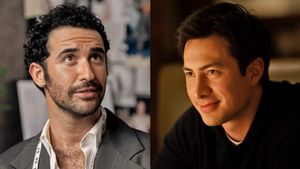









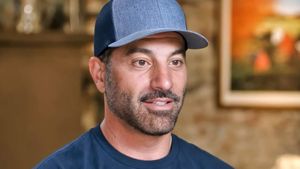






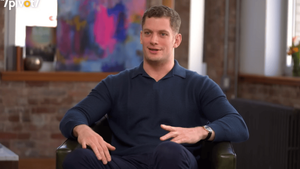





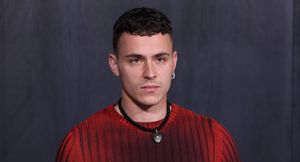












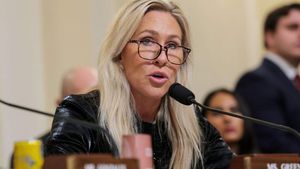

Charlie Kirk DID say stoning gay people was the 'perfect law' — and these other heinous quotes